A : Among all ortho halophenol , fluorophenol is least acidic .
R : Ortho - fluorophenol forms intramolecular H - bond .
If both Assertion & Reason are true and the reason is the correct explanation of the assertion, then mark (1)
If both Assertion & Reason are true but the reason is not the correct explanation of the assertion, then mark (2)
If Assertion is true statement but Reason is false , then mark (3)
If both Assertion and Reason are false statements , then mark (4)
The correct Answer is:A
To solve the question, we need to analyze both the assertion (A) and the reason (R) provided:
Assertion (A): Among all ortho halophenols, fluorophenol is least acidic.
Reason (R): Ortho-fluorophenol forms intramolecular hydrogen bond.
1. Understanding Ortho Halophenols:
- Ortho halophenols are compounds where a hydroxyl group (-OH) and a halogen (like F, Cl, Br, I) are both attached to the benzene ring at adjacent positions (ortho position).
- The acidity of phenols is influenced by the ability of the -OH group to release a proton (H⁺ ion).
2. Analyzing the Acidity of Fluorophenol:
- Fluorophenol has a fluorine atom, which is highly electronegative. This electronegativity can lead to the formation of intramolecular hydrogen bonds.
- In ortho-fluorophenol, the hydrogen atom of the -OH group can form a hydrogen bond with the fluorine atom. This intramolecular hydrogen bond stabilizes the molecule and makes it more difficult for the -OH group to release a proton (H⁺).
3. Comparing with Other Ortho Halophenols:
- Other ortho halophenols (like ortho-chlorophenol, ortho-bromophenol, and ortho-iodophenol) do not have the same capacity for intramolecular hydrogen bonding because chlorine, bromine, and iodine are less electronegative than fluorine.
- Therefore, these compounds can more readily release a proton, making them more acidic compared to fluorophenol.
4. Conclusion on Assertion (A):
- Since ortho-fluorophenol is stabilized by intramolecular hydrogen bonding, it is indeed the least acidic among ortho halophenols. Thus, assertion (A) is true.
5. Conclusion on Reason (R):
- The reason states that ortho-fluorophenol forms intramolecular hydrogen bonds, which is correct. This intramolecular hydrogen bonding is responsible for the decreased acidity of fluorophenol. Thus, reason (R) is also true.
6. Final Evaluation:
- Both the assertion and the reason are true, and the reason correctly explains the assertion. Therefore, the correct answer is that both A and R are true, and R is the correct explanation for A.
Final Answer:
The correct option is Option 1: Both assertion and reason are true, and the reason is the correct explanation of the assertion.
Reason (R): Ortho-fluorophenol forms intramolecular hydrogen bond.
- Ortho halophenols are compounds where a hydroxyl group (-OH) and a halogen (like F, Cl, Br, I) are both attached to the benzene ring at adjacent positions (ortho position).
- The acidity of phenols is influenced by the ability of the -OH group to release a proton (H⁺ ion).
- Fluorophenol has a fluorine atom, which is highly electronegative. This electronegativity can lead to the formation of intramolecular hydrogen bonds.
- In ortho-fluorophenol, the hydrogen atom of the -OH group can form a hydrogen bond with the fluorine atom. This intramolecular hydrogen bond stabilizes the molecule and makes it more difficult for the -OH group to release a proton (H⁺).
- Other ortho halophenols (like ortho-chlorophenol, ortho-bromophenol, and ortho-iodophenol) do not have the same capacity for intramolecular hydrogen bonding because chlorine, bromine, and iodine are less electronegative than fluorine.
- Therefore, these compounds can more readily release a proton, making them more acidic compared to fluorophenol.
- Since ortho-fluorophenol is stabilized by intramolecular hydrogen bonding, it is indeed the least acidic among ortho halophenols. Thus, assertion (A) is true.
- The reason states that ortho-fluorophenol forms intramolecular hydrogen bonds, which is correct. This intramolecular hydrogen bonding is responsible for the decreased acidity of fluorophenol. Thus, reason (R) is also true.
- Both the assertion and the reason are true, and the reason correctly explains the assertion. Therefore, the correct answer is that both A and R are true, and R is the correct explanation for A.
The correct option is Option 1: Both assertion and reason are true, and the reason is the correct explanation of the assertion.
Topper's Solved these Questions
- ALCOHOLS, PHENOLS AND ETHERSBOOK - AAKASH INSTITUTE ENGLISHCHAPTER - ALCOHOLS, PHENOLS AND ETHERSEXERCISE - Assignment Section - C (Questions asked Prior to medical Ent. Exams. 2005)
13 Videos
- ALCOHOLS, PHENOLS AND ETHERS BOOK - AAKASH INSTITUTE ENGLISHCHAPTER - ALCOHOLS, PHENOLS AND ETHERS EXERCISE - Try Yourself
5 Videos
Similar Questions
a. How many conformational isomers are possible of 4-isopropyl cylohexan-1,2-diols (I) ?
b. Which isomers of (I) cannot form intramolecular H-bonding ?
c. Which conformational isomer of cis-cyclohexan-1,3-diol forms intramolecular H-bonding ?
d. Which conformational isomer of cis-cyclohexan-1,4-diol forms intramonal H-bonding ?
View SolutionA : Ortho - cresol is weaker acidic than meta-cresol .
R : It is due to ortho effect .
View Solution
Knowledge Check
Which of the following conformers of 1, 2-diol cannot form intramolecular H-bond?
A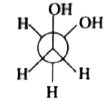 B
B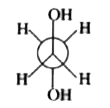 C
C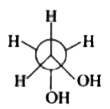 D
D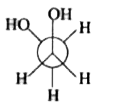
Statement-1:PhCOCOCOPh forms stable hydrate
Statement-2:The compound in the hydrate form has intramolecular H-bonding.
View SolutionAssertion:- pKa1 of fumeric acid is greater than maleic acid.
Reason Conjugate base of fumeric acid is more stable due to intramolecular H-bonding.
View SolutionStructures of molecules of two compounds are given below.
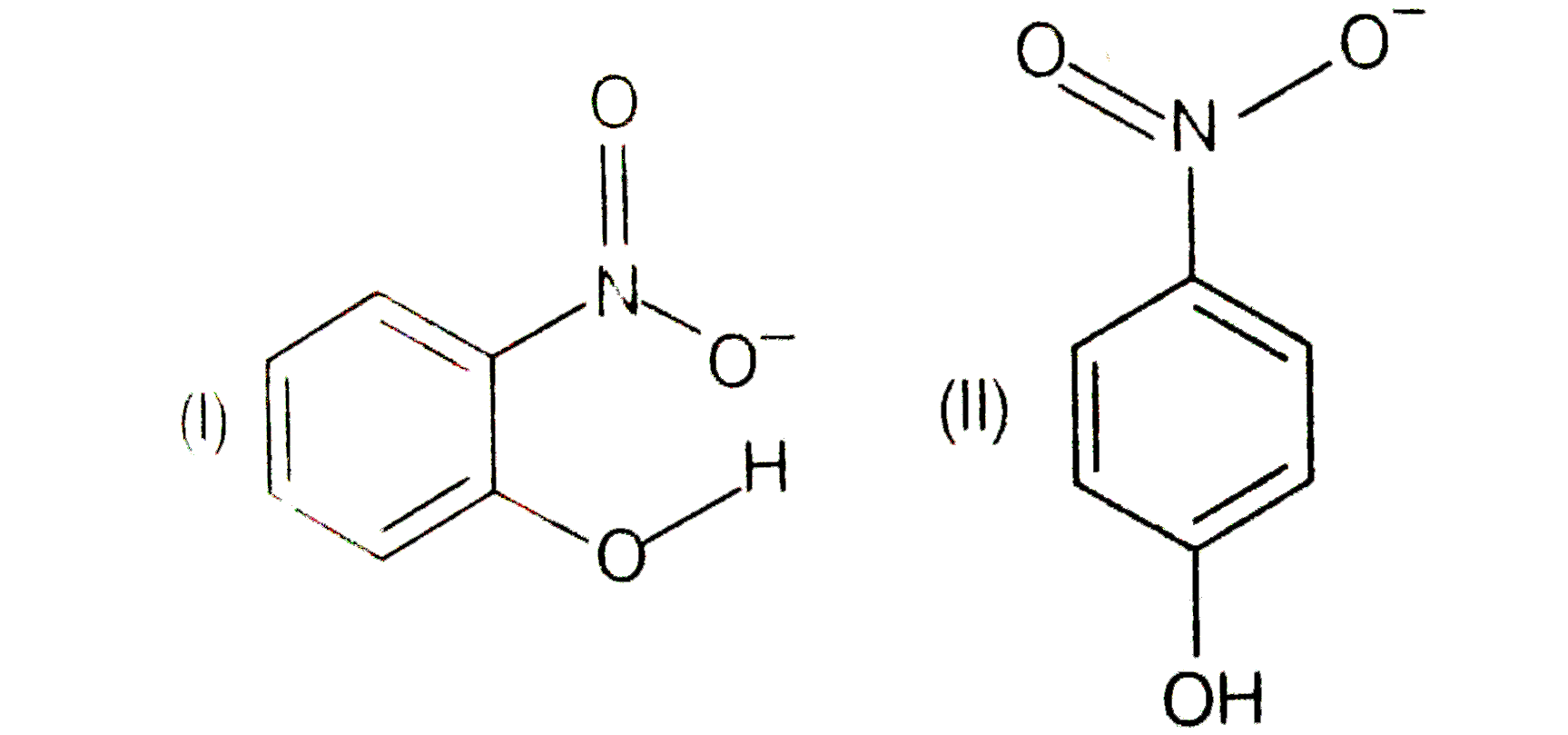
a) Which of the two compounds will have intermolecular hydrogen bonding and which compound is expected to show intramolecular hydrogen bonding?
b) The melting point of compound depends on, among other things, the extent of hydrogen bonding. On this basis explain which of the above two compounds will show higher melting point?
c) Solubility of compounds in water depends on powers to form hydrogen bonds with water. Which of the above compounds will form hydrogen bond with easily and be more stable in it?
View SolutionAssertion (A) : CH3OCH3andC2H5OH has comparable molecular weight but boiling point of C2H5OH is more than dimethyl ether.
Reason (R) : C2H5OH forms intermolecular. H-bonding while CH3OCH3 forms intramolecular H-bonding.
View SolutionIn the following questions, a statement of assertion (A) is followed by a statement of reason (R )
A : Each molecule of H2O forms four H-bond in the form of ice.
R : ice is solid state of H2O.
View SolutionStatement-1:Ortho iodobenzoic acid is strongest acid among all ortho halobenzoic acids.
Statement-2: Iodine exerts maximum ortho effect (steric effect ) so the acid weakening resonance effect of aromatic ring is decreased.
View SolutionNitrogen , oxygen and fluorine are the highly electronegative elements. When they are tied to a hydrogen atom to form covalent bond, the electrons of the covalent bond are shifted towards the more electronegative atom.This partially positively charged hydrogen atom forms a bond with the other electronegative atom. This bond is called as hydrogen bond and is weaker than covalent bond.For example, in HF molecule, the hydrogen bond exists between hydrogen atom of one molecule and fluorine atom of another molecule as depicted
−−−Hδ+−Fδ−−−−Hδ+−Fδ−−−−Hδ+−Fδ−
Here, hydrogen bond acts as bridge between atoms which holds one atom by covalent bond and the other by hydrogen bond.Hydrogen bond is represented by a dotted line (---) while a solid line represents the covalent bond. Thus, hydrogen bond can be defined as the attractive force which binds hydrogen atom of one molecule with the electronegative atom (F,O and N) of another molecule.
If boiling point of ortho-nitro phenol and para nitro phenol are t1andt2 respectively and mixture of these two are heated at temperature 't' where 't' is between these two temperature.Vapours will significantly contains
View Solution
